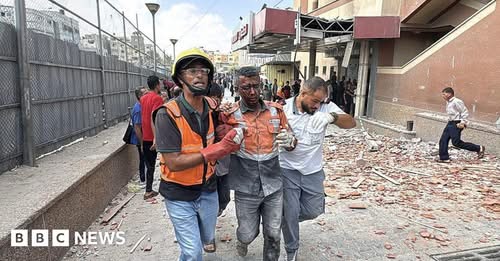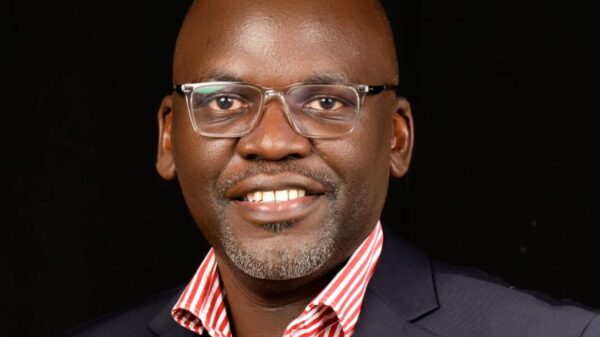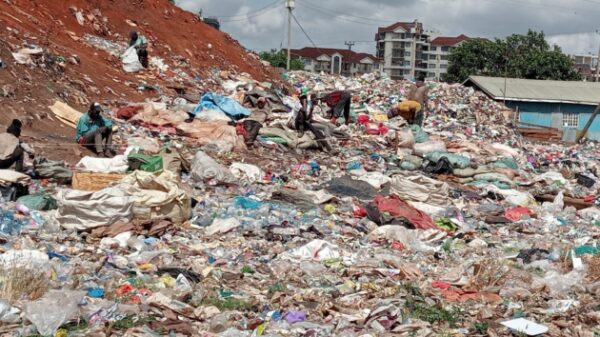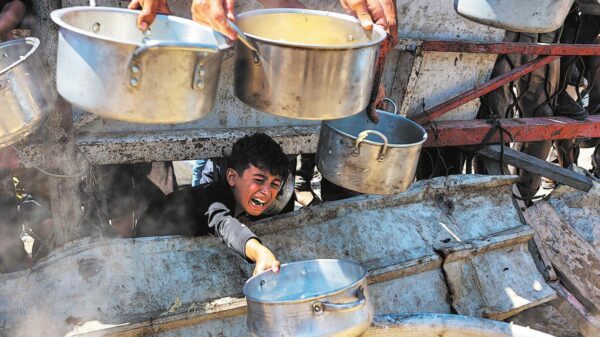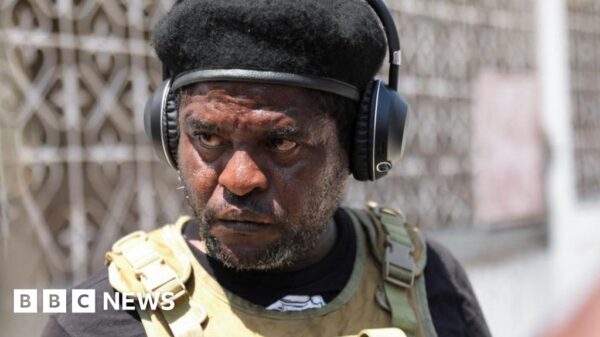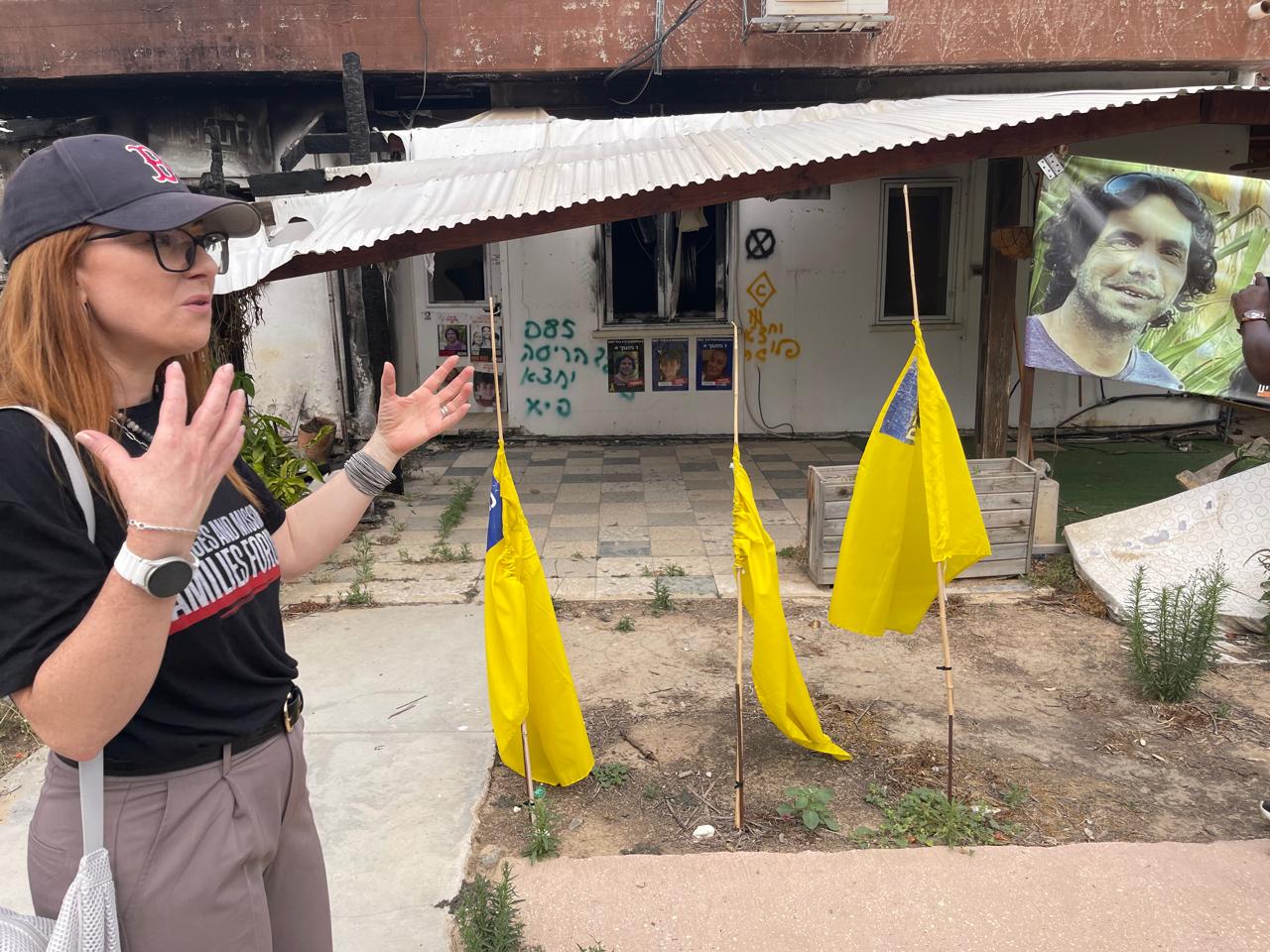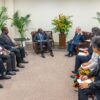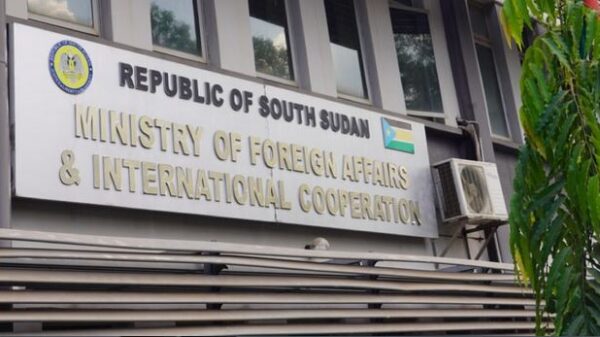NIR OZ, Israel, May 19 – I was part of a delegation of journalists from English-speaking African countries on a firsthand fact-finding tour of Israel last week, visiting key sites affected by the devastating October 7, 2023, Hamas-led attack. This was the first time in Israel for many of us — an experience that brought the brutal realities of the Israel-Hamas conflict into sharp focus.
One of the most haunting stops on our itinerary was Kibbutz Nir Oz, a tranquil village in the south near the Gaza border that turned into a killing field on that fateful Saturday morning, a Jewish holiday known as Shabbat.
“Only Seven Houses Were Spared”
According to survivors and Israeli authorities, Nir Oz was among the worst-hit communities. Of its 400 residents, 45 were murdered and 79 were kidnapped and taken into Gaza. A staggering 220 homes were destroyed or burned, with only seven left untouched. In total, Israeli authorities said that 1,195 people were killed during the coordinated attack, including 736 civilians — 36 of them children — and 379 members of the Israeli security forces. An estimated 250 people were abducted. While many were freed during ceasefire deals, Israel says 58 remain in captivity, of whom 23 are believed to be alive.
The latest to be freed is Edan Alexander, 21, an Israeli-American soldier who was freed on May 12 in a deal brokered by US President Donald Trump. Alexander was 19 when the attack occurred and he was taken captive.
Following his release, 58 hostages remain in captivity in Gaza, with at least 20 believed to be alive.
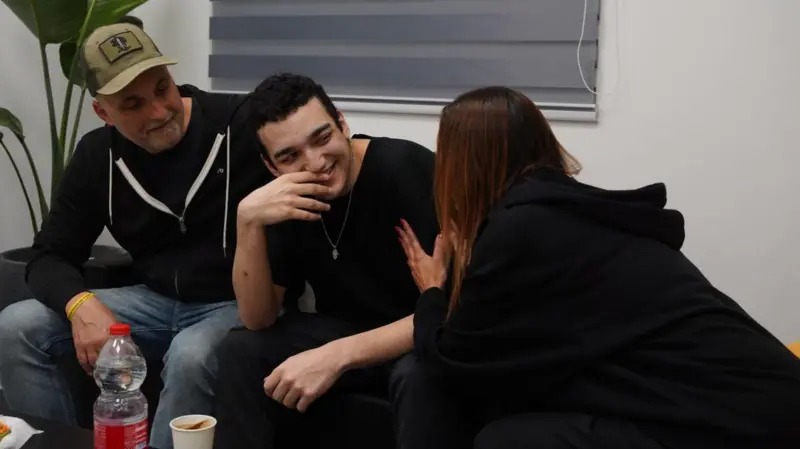
At Nir Oz, we met Ola Metzger, a survivor of the massacre who now serves as an unofficial custodian of the village’s memory. She walked us through a silent and desolate landscape of torched homes and collapsed walls, dotted with black and yellow flags — markers of those killed or still missing.
“Where you see a black flag, it signifies those killed in the attack. The yellow flag represents a hostage still held in Gaza,” she explained solemnly.

Ola survived with her husband, children and niece after hiding in their home’s safe room for nearly ten hours. While Hamas militants ransacked their house, they never opened fire.
“I don’t know whether to describe it as luck,” she said, her voice trembling. “Our neighbours were executed. We were terrified, whispering that we would be next.”

Her in-laws, Tami and Yoram Metzger, were among those kidnapped. Tami was released in a November 2023 hostage deal. Yoram, however, was murdered in Hamas tunnels in February 2024. His body was returned to Israel for burial on August 24 — a grim closure.
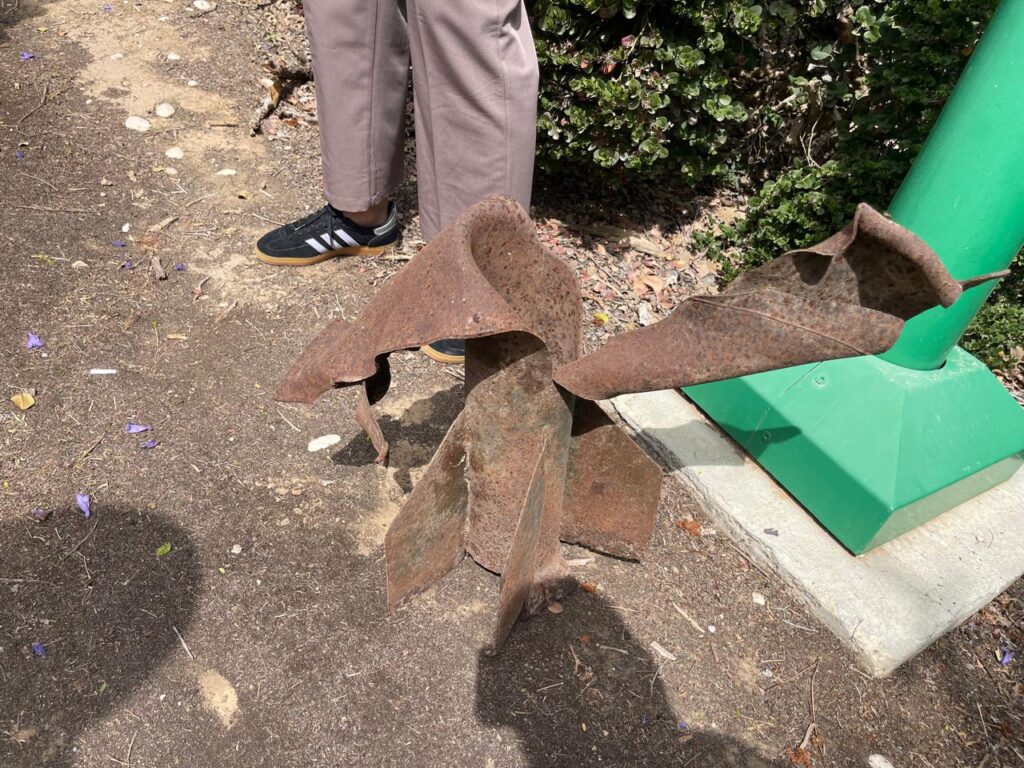
“We want to come back to Nir Oz,” Ola told us, displaying the resilience of the Israelis. “This is our only home. But the government must guarantee security. On October 7, it failed us.”
The Bibas Family: A Symbol of the Hostage Crisis
Ola also pointed out the charred home of Johnny and Tamar Siman Tov, executed in front of their children, who were later burned alive. The family dog was the only survivor.
A nearby kindergarten now lies in ruins — where Ariel Bibas celebrated his fourth birthday, just months before being kidnapped along with his nine-month-old brother Kfir and mother Shiri. Their father, Yarden Bibas, was taken separately. Hamas later claimed Shiri and the boys died in Israeli airstrikes — a claim that remained unverified until February 2025. After 484 days in captivity, Yarden was released on February 1. Days later, Hamas returned the bodies of his wife and children. They were buried on February 26 amid global mourning, with Argentina declaring two days of mourning in their honour.
The Nova Festival Massacre: Site of the Greatest Civilian Casualties
From Kibbutz Nir Oz, we headed to the Nova festival massacre site, where 378 people — 344 civilians and 34 security personnel — were killed and many more wounded during the Supernova Sukkot Gathering, an open-air music festival.

This was the deadliest of a series of coordinated massacres by Hamas targeting Israeli civilians in communities adjacent to the Gaza Strip on 7 October. Other attacks occurred in kibbutzim and moshavim such as Netiv HaAsara, Be’eri, Kfar Aza, Nir Oz, and Holit.
At the Nova festival site near Kibbutz Re’im, we met dozens of grieving families and friends who often visit to honour the memory of their loved ones. Thousands of visitors, including many from overseas, come to this memorial daily to seek connection, remembrance and healing.

The site commemorates the 364 partygoers who were massacred that morning by Hamas terrorists, and the 40 more who were abducted and taken to the Gaza Strip, never to return. In total, some 1,200 people — mainly civilians — were killed in the attacks that day, with 251 kidnapped.
“For us, this site is not just a memory of what happened during the attack — it is a living testament to the resilience, unity, and sorrow of us Israelis,” said Yosef, who was visiting to commemorate a relative lost in the tragedy.
A Survivor’s Story: “I Played Dead to Stay Alive”
We also visited the Tekuma area, where more than 3,000 burnt-out vehicles —destroyed during the attack — have been preserved as a chilling reminder of the day’s horror.
We were also shown pick-up trucks and motorcycles used by the Hamas terrorists when they crossed into Israel from Gaza.

It was here that we met Mazal Tazazo, an Ethiopian-Israeli woman who survived the Nova festival massacre by playing dead.
“I will never forget that day because I saw my friends executed and I only survived because I played dead,” she said, trembling. “Sometimes, I think of committing suicide, but I live today because of my 10-year-old son. He is my hope.”
“Throughout the ordeal, the only thing that saved me was pretending that I was dead — even when the terrorists came close to me and one turned my face. I held my breath. He lifted my face, looked at me and let go. I had my eyes closed.”

“All this time, Danielle and Yochai — my best friends — were lying dead just next to me,” she said. One terrorist struck her with the butt of a gun, injuring her finger.
“And as I lay there, in a hail of bullets all around me, I kept praying that someone would come to rescue me. I was so terrified. At one point I thought I was already dead, but I feared the worst was yet to come because the terrorists were setting cars and bushes on fire.”
Eventually, she spotted a nearby vehicle. “I ran for my life, hid inside, and was eventually rescued.”
“You Can’t End the War Without Releasing the Hostages”
Back in Tel Aviv, we encountered deep frustration and grief among Israeli families. At the offices of the Forum of Families of Hostages, we met Viki Cohen, whose 20-year-old son, Nimrod, remains in Hamas captivity.
Nimrod is among Israeli soldiers captured on the fateful day, and is thought to be the youngest captive remaining in Gaza.

“Why is Prime Minister Netanyahu continuing with airstrikes when our loved ones are still held in Gaza?” she asked, fighting back tears. “My son is alive in there. Fighting is not the priority — bringing them home is.”
Cohen said the majority of Israelis — nearly 70%, by her account — now favour a ceasefire to allow for hostage negotiations.
Daniel Shek, former Israeli Ambassador to France and now head of diplomacy at the Forum of Families, put it bluntly:
“There is an extreme right-wing in the coalition that believes stopping the war equals losing. But you can’t end the war without releasing the hostages, and you can’t release all the hostages without ending the war.”

Trump Blames Biden, Offers Gaza ‘Freedom Zone’ Proposal
US President Donald Trump recently weighed in during a Fox News interview after his Gulf tour. He said he discussed Gaza with leaders in Saudi Arabia, Qatar and the UAE, all of whom expressed interest in contributing to a long-term solution.
He denied tensions with Prime Minister Netanyahu, instead describing him as “an angry man” deeply affected by the October 7 attacks but praised his strength. Trump blamed the Biden administration’s Iran policy — particularly the lifting of sanctions — for enabling Hamas financially.
“Iran had no money when I was in office. They were stone-cold broke,” Trump claimed. “This wouldn’t have happened under my watch.”
On Gaza’s future, he called it dysfunctional and proposed transforming it into a “freedom zone.”
Editor’s Note: This story is part of a special series following a fact-finding mission by journalists from English-speaking African countries to Israel, aimed at understanding the impact of the October 7 attacks, the hostage crisis and the ongoing war in Gaza.

